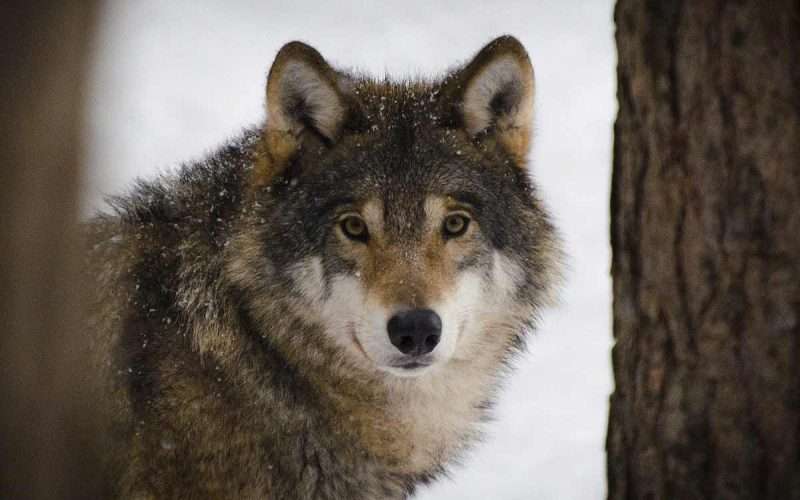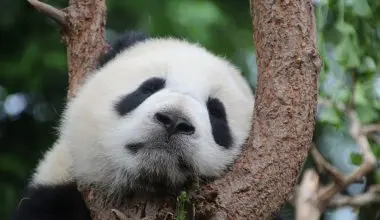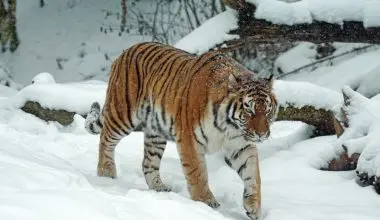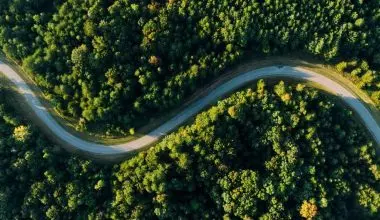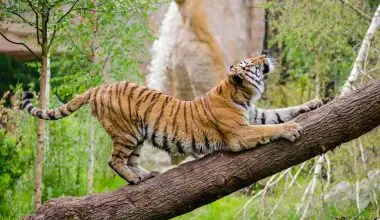Table of Contents Show
More than 750,000 years ago, Wolves made their way to North America. Their habitat grew in most of the Northern Hemisphere and they flourished in many climates.
It is estimated that about 5000 years ago, around 2 million wolves inhabited the earth.
Today, wolves are present in diverse environments, including mountain areas, tundra, woodlands, deserts, grasslands, and forests.
Around 7,000 of them live in Alaska, whereas 5,000 of them live in the United States’ lower states. They even inhabit Poland, Canada, Russia, Portugal, and Italy.
Importance of Wolves as Keystone Species
An ecosystem consists of a biological community that comprises many interacting organisms and the environment they live in.
There are many living things living among each other, along with nonliving things. Every specie in an ecosystem relies on each other and every specie have its own role to play.
Keystone species play a vital role in impacting the population levels and prevalence of many species within the ecosystem.
They are often a predator. Such predators can control the population and distribution of prey species at large.
Wolves are considered keystone species to maintain a healthy ecosystem. They help by regulating prey species, and they let many plants and animals to flourish.
They initiate the domino-effect. The system fails to support the natural level of biodiversity without wolves.
How have Wolves Benefitted Yellowstone National Park?

The wolves were absent for 70 years from the Yellowstone Park. Yellowstone National Park is the world’s first national park, to inspire humans for generations to come. It has a controlled environment and habitat to preserve nature’s beauty.
Through exterminations, the park lost its wolves in its early days. Recently, they were brought back.
With the absence of wolves, elk had become accustomed to native willows and tender along the river banks without risk. Due to the keystone species missing in the habitat, there was a decline in the trees that elk eats, a decline in songbirds, and a decline of aspen and willow trees.
Due to this, the decline in the wolf population indicates that there is a trophic cascade. With the return of wolves in the national park, scientists noticed a return to willows and vegetation.
With the return of willows, there was more diverse wildlife. Dried up wetlands and beaver dams returned, along with waterfowl and wetland birds.
Along with the animals, plants even thrived as the over-gazed grasses started to come back to life. It was observed how keystone species play a significant role in keeping up the habitat and the ecosystem.
How do Wolves help the Environment?
Many wolves play a crucial role in keeping our ecosystem intact and healthy. They help keep elk and deer in check, leading to many benefits to other plants and animals.
Their prey’s carcasses also help to get nutrients and provide food to other animals like scavengers and bears. They have a ripple effect on the ecosystem.
When these wolves eat elk, the waste left behind enhances the level of nitrogen and other nutrients in the soil below.
The wolf kills benefits three times more than human hunting kills.
1. Competition and Prey

Wolves mainly prey on elk, moose, deer, and other ungulates. Apart from that, they also like to feed on smaller species like mice, beaver, squirrels, rabbits, grouse, and songbirds.
They are creatures that are competitive and compete with other carnivores like bears, cougars, and coyotes. Studies have been carried out that stated that the presence of wolves may reduce the population of coyotes in various regions of the world.
This way, wolves are able to influence the dynamics of wildlife species throughout the ecosystem. Moreover, this alters the relationship between the prey and the predator.
In addition, in ungulate herds from where the wolves have been absent for some time, there is a chance of increase in the healthy proportion of animals that are of a prime age. This will lead to an increase in pregnancy and birth rate.
Furthermore, wolves are ferocious animals and they play a key role in keeping a balance of other animals in the ecosystem.
2. Maintain a Good Health of the Ecosystem
It is a surprising fact that wolves play a vital role in limiting the adverse effects of disease. For instance, because of the terror of wolves, deer and elk congregate in smaller groups. This aids in reducing the transmission risk of Chronic Wasting Disease.
The disease is very harmful and is a great threat to elk and deer population. Wolves also help in terms of eliminating the sick animals which is beneficial for the environment in the sense that those animals are not able to spread their infections.
Likewise, there is another disease known as Tick-borne Encephalitis which is a major threat to the animals. It is a disease that has no cure.
Researchers found out that there was a correlation between the high number of red foxes and the increase in the number of humans who were having this deadly disease.
Thanks to wolves that they feed on foxes, this helps in decreasing this disease and this is why we should consider restoring the wolf population.
What will Happen if Wolves go Extinct?

Being one of the predators who influence the environment, wolves are still at the risk of going extinct. Their numbers are decreasing year by year. They disproportionately affect the habitat in which they live. For this reason, their presence is significant.
The fact is that wolves are on the top of the chain that goes down to a cascade of effects within the same ecosystem. If wolves are gone to extinction, there will not be any alteration in the population, behaviour, and distribution of animals around the globe.
Going on, the landscape will not be flourished in the way it used to in their presence. These changes might not be seen in the short term, but they would have a profound effect later on.
Yellowstone has been a great example to understand the importance of wolves on the habitat and its ecosystem. The keystones species are essential to run a unique ecosystem.
With wolves going extinct, human population will take over their habitation which will negatively impact the environment. They habitats include rangelands and forests which have great potential of safeguarding the wildlife populations.
Humans are destroying the habitats for their own habitation. They are using these areas to make roads, highways, and residential houses which increases fragmentation. Due to this, wold habitats in the United States are reducing which is leading to genetically identifiable groups as to the lack of mixed populations.
Also, humans have been hunting gray wolves since a long time now in order to protect the livestock. Industrialisation also plays a role is destroying the wolf habitats which clearly shows that wolves do not live in a protected environment.
Worth mentioning is the fact that when a dominant predator disappears from the surrounding, the next best predator takes charge and become the top in the food chain. So, if wolves go extinct, coyotes will be the next in line to take over.
